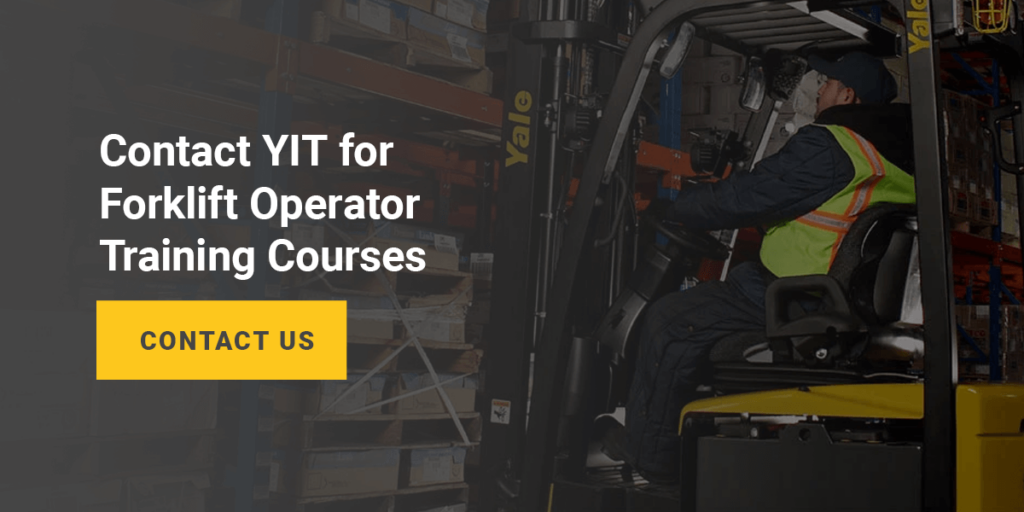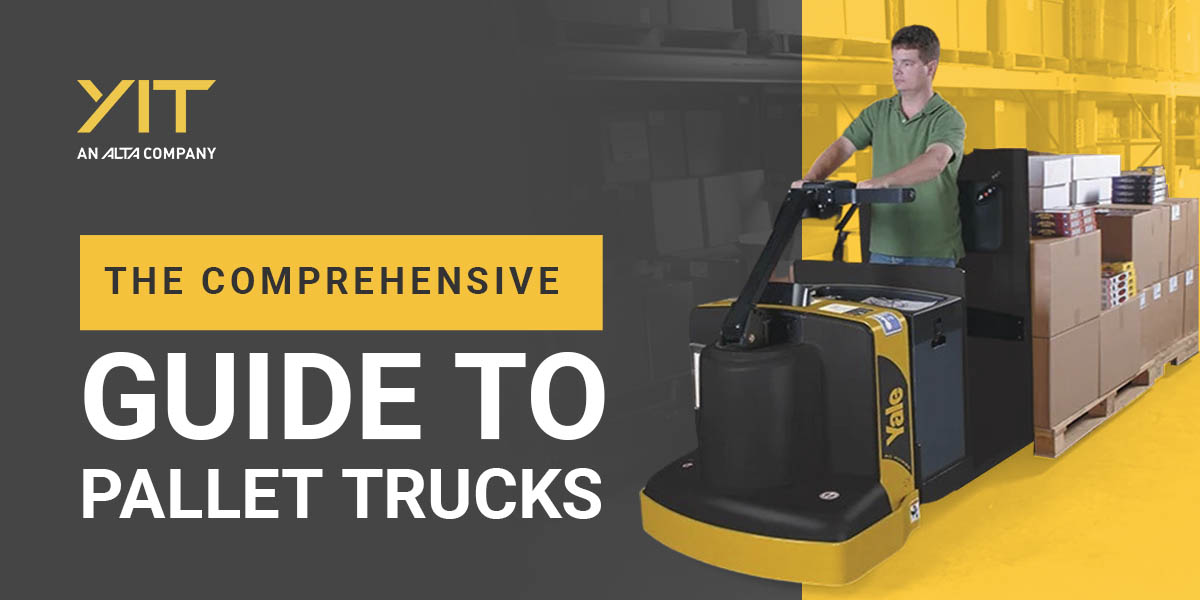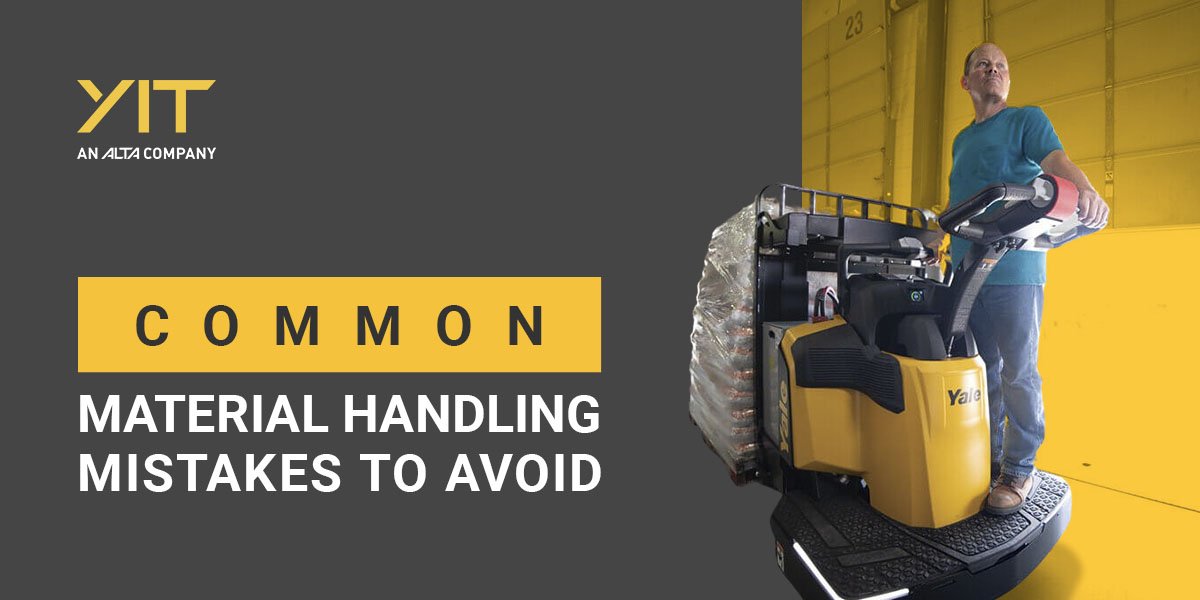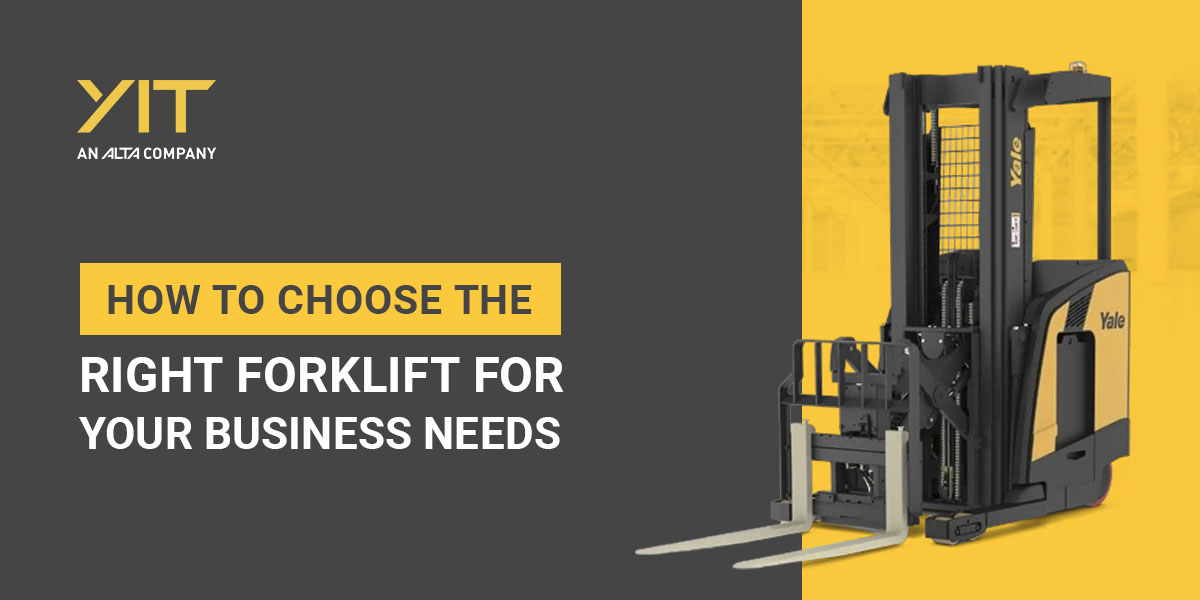Forklifts
Forklift Operator Visibility: Why Driver Visibility Is Important
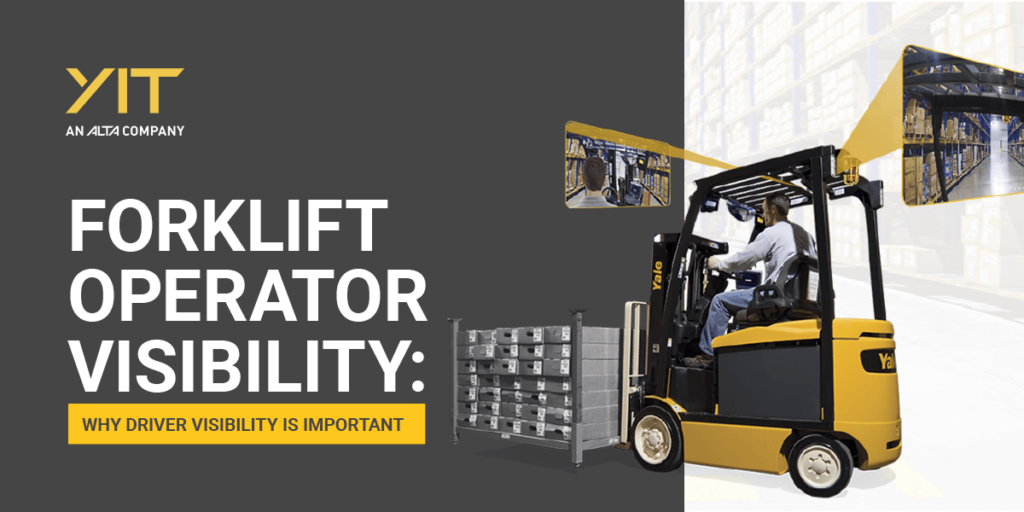
January 10, 2023
Forklift safety is crucial and forklift driver visibility is key to reducing the risk of damages and injuries. Forklift operators need to be able to see around the forklift to avoid potential collisions. Additionally, they should be able to see the load and their surroundings to ensure their safety, the safety of the load they carry and the warehouse personnel around them.
The load, unpleasant driving circumstances or the lift’s mast construction often obscure a driver’s field of view. Drivers are also concerned with load stability and ensuring that everything arrives in one piece. The warehouse manager is responsible for implementing solutions to these situations.
Why Visibility Is Important for Forklift Operators
As a warehouse manager, it’s your responsibility to improve forklift operator visibility and assist in establishing a safe environment. Your forklift operators must see where they are and where they’re going to prevent damage to loads, other equipment or personnel.
Various factors can cause visual obstructions, including the forklift operators themselves. Busy, distracted, agitated or inattentive drivers with compromised sightlines may collide with pallet rack poles, walls, building columns, machinery or personnel.
There are several methods available to decrease blind spots, many of which work to increase safety, profability and efficiency in your warehouse.
Forklift Operator Visual Obstructions
Operating a forklift is challenging, as forklifts are not forgiving pieces of machinery. To operate the equipment safely, forklift operators must have exceptional judgment, spatial awareness and fine motor skills. However, no matter how skilled a forklift operator is, they’re still a human being who might not notice everything.
In ideal conditions, a cautious operator can avoid blind spots, making them less of a safety threat. Unfortunately, most of the time, they won’t be working in ideal conditions. Your forklift operators may be outside when the weather isn’t cooperating. When they’re inside, the lighting in the warehouse might go out, creating shadows they aren’t used to dealing with.
Whatever the cause, visibility remains an essential element of operating a forklift. To improve forklift operator visibility as a warehouse manager or owner, you must first know the causes and implications of visual obstructions.
Causes of Visual Obstruction
Forklift operators face several frequent causes of visual obstructions, from their machine and the loads it carries to the warehouse it operates within:
- Loads, guards or cages: A large load can obstruct the driver’s view. When they have poor visibility in front of them, some forklift operators will choose to drive backward. However, looking backward for extended trips through a warehouse is difficult for the drivers and may cause neck and back strain.
- Forklift blind spots: Drivers may experience blind spots when driving a forklift. The forklift’s counterweight, far sides and corners, LP fuel cylinder and overhead guard create some of the most common blind spots.
- Facility design and clutter: The warehouse’s layout, racks and other equipment frequently obstruct a driver’s view.
Implications of Visual Obstructions
Blind spots are dangerous for your operators and directly impact your company’s productivity and profitability. Here is a small list of implications for assessing your forklift efficiency:
- Unsafe behaviours: Operators may resort to dangerous behaviours when faced with visual obstructions, like getting off the truck, leaning or standing up on the forklift to see better.
- Damages: Visual obstructions can lead to accidents that damage racks, other loads and even the forklift itself.
- Reduced productivity: Some forklift operators may need an extra pair of eyes and ask for a spotter for load picking, placement and manoeuvres. Not only is operating the forklift slower with two people piloting it but the spotter’s productivity will also lower.
- Safety risk to personnel: Keeping personnel and traffic as separate as possible is vital. The areas where this isn’t possible are often busy, low-visibility places where personnel on the ground can’t see forklifts and forklift drivers can’t see them.
4 Tips To Improve Forklift Operator Visibility
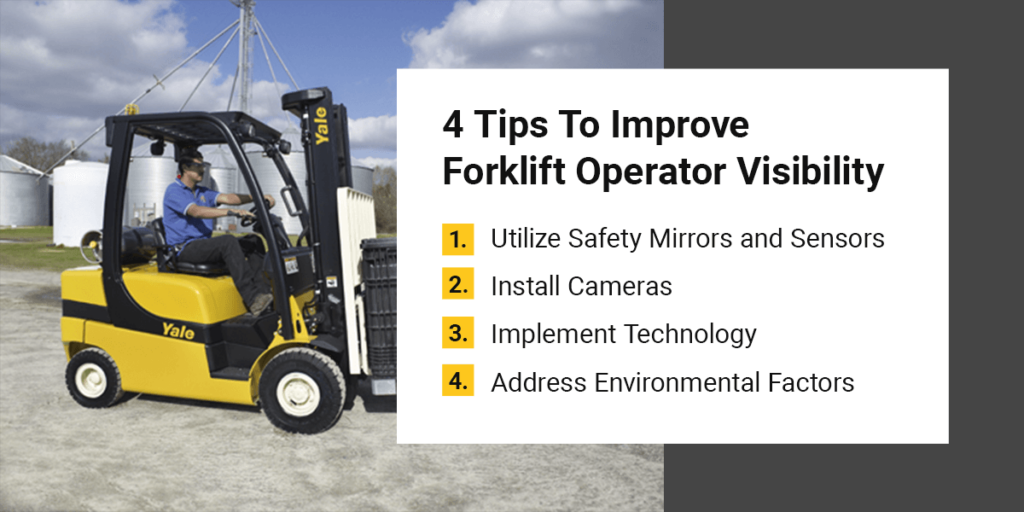
Various solutions are available to help decrease blind spots when driving a forklift. Improved procedures, safety equipment, lighting and other factors can aid visibility.
You may also need to prepare your warehouse for collisions in locations where they’re most likely to occur. Potential preparations include installing steel guard rails, rack guards and other safeguards to protect assets and personnel in the case of an accident. Here are a few tips to improve forklift operator visibility:
1. Utilize Safety Mirrors and Sensors
Mirrors allow drivers to see into parallel aisles, past curves and around other blind spots, providing them with the information they need to make better judgments. You can place dome and convex mirrors on walls, rack posts and ceilings at minimal expense. Rear-view mirrors improve sight, allowing the vehicle to back up securely without hitting a person, rack upright, wall or other machinery.
You might also consider installing automatic sensor mirrors to monitor aisles. The sensors’ flashing lights and warnings can help prevent collisions in more problematic places.
2. Install Cameras
Forklift cameras can provide better visibility in any forklift scenario. You can place cameras in several positions on the forklift to give views of the rear, mast, fork and sides. These inexpensive devices are especially valuable when drivers can’t see behind their forklifts or beyond a load.
Installing backup cameras can be helpful for operators exiting a training facility or entering a loading dock with a load on the forks. You can also put them on the carriage or above guards to assist drivers in aligning their forks with a pallet.
3. Implement Technology
Two common causes of damage in a warehouse are:
- Improper rack loading due to misaligned tines.
- Direct collisions from tines on palletized items as they’re loaded or emptied.
These accidents can result in rack damage, pallet spills and pierced cases. You can help reduce these risks by Implementing cameras, laser guides and sensor forklift alignment systems. These tools allow operators to line up their tines more precisely without reverting to unsafe behaviours.
4. Address Environmental Factors
Creating a clean and well-lit environment can help improve forklift operator visibility. If you continue to have accidents and collisions involving many drivers over time, it might be time to address your warehouse’s environment.
Reducing accidents and collisions may require reducing the environmental conditions that lead to those events:
- Reduce clutter: Clutter in aisles or at dock entrances can reduce visibility. Ensure your warehouse lanes and corridors are clear of pallets, loads, carton stacks or other obstructions.
- Increase lighting: Warehouses can get quite dark, especially in the vast aisles between rack rows. Consider adding some energy-efficient lighting options to increase overall visibility and ensure that the places where forklift operators work are well-lit.
- Eliminate distractions: Using cell phones, listening to headphones, eating and drinking can distract forklift drivers and lead to accidents. A distraction-free environment can help drivers focus on properly driving and manoeuvring the forklift.
Contact YIT for Forklift Operator Training Courses
A forklift operator with good visibility can make better judgments and drive safely near personnel, equipment, machinery and storage racks. Finding techniques to improve forklift operator visibility is essential for a safer, more efficient warehouse operation.
You can accelerate your forklift operation improvements with YIT’s comprehensive forklift training courses. We’re an award-winning full-service company providing programs for new and experienced operators who want to renew their credentials. Our training courses explore theoretical and practical components involving the safe operation of forklifts.
View our forklift operator training courses and contact us today for more information.

